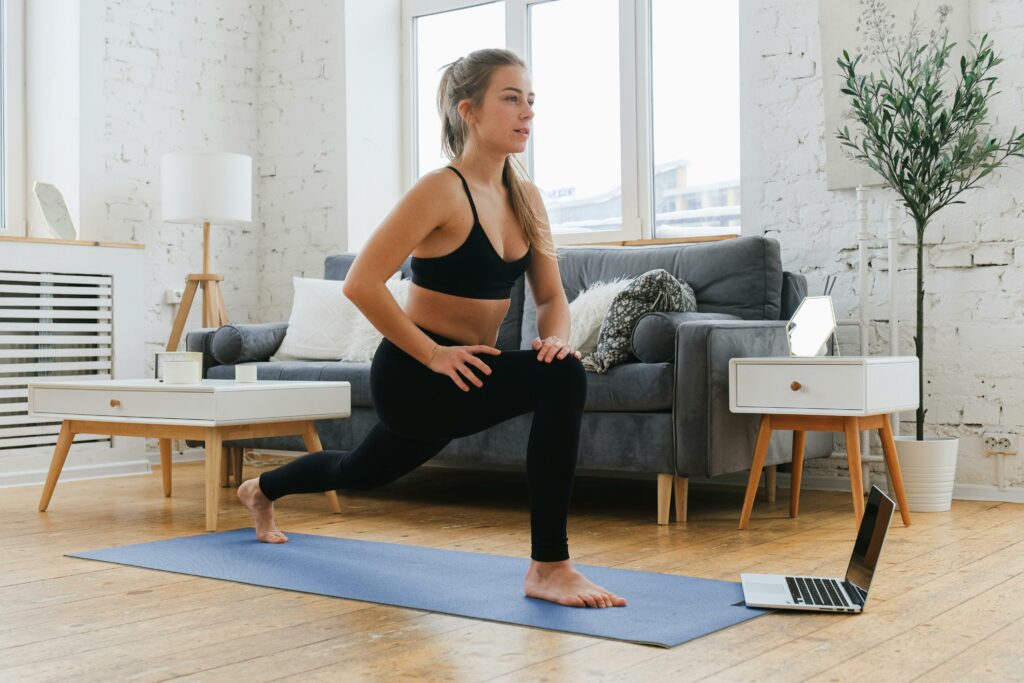Starting an exercise journey as a beginner can indeed feel intimidating, especially when you’re unsure how to start. The prospect of stepping into unfamiliar territory, where terms like ‘reps’ and ‘sets’ are thrown around, might make you feel like you’re out of your depth. But no worries, we will explain in this post how to embrace the new you, and making small, consistent changes will set you up for success. With a little motivation and self-care, you’ll be on your way to improved health and well-being.

Embrace the New You
Week 1: Accept that change is difficult but worth it. Go easy on yourself.
Embarking on a new exercise routine is a transformative process that requires courage and patience. It’s important to understand that change doesn’t happen overnight. Celebrate small victories, such as going for a 10-minute walk or doing a few push-ups. These small steps are the building blocks of sustainable habits. Don’t get caught up in the pursuit of instant results. Instead, focus on the long-term benefits and trust that your body will thank you for the extra care and attention you’re giving it.
Week 2: Notice your increased energy. This means you’re on the right track!
As you begin to move your body consistently, you’ll likely notice a surge in your energy levels. This is a positive sign that your efforts are paying off. Revel in this newfound vitality and let it empower you to continue nurturing your health. It’s important to stay positive, even if you experience off days. Fitness is a journey with its own set of ups and downs. Keep exercising and the boosts in energy and mood will become more frequent and noticeable.
Week 4: Feel proud of your commitment to self-improvement.
After a month of dedication, take a moment to congratulate yourself. It takes immense dedication to form a new wellness habit, and you’ve done just that. Even if you’re still working on building your endurance and strength, you’ve achieved something significant. Let this pride fuel your desire to continue exercising. Your commitment is a testament to your resilience and your drive for positive change.
How To Start: Tips and Tricks for Exercising
1. Walk 10 minutes a day. Gradually increase time.
Begin with gentle walks, even if it’s just up and down the block or around your living room. As this becomes easier, add 5-10 minutes to your walking time. Walking is an accessible form of exercise for people of all fitness levels. It’s a fantastic way to boost your heart health, improve your mood, and increase your energy. To make your walks more meditative, focus on your breath and the sensations you experience as you move. Pay attention to the rhythm of your steps, the feel of the air on your skin, and the sounds around you.
2. Do bodyweight exercises like squats or push-ups.
You don’t need any equipment to start exercising or building strength. Begin with a few modified push-ups against a wall or on your knees. As you grow stronger, progress to full push-ups on the floor. When trying squats, hold onto a chair for support at first. Over time, work up to doing freestanding squats. Remember to go at your own pace and be kind to your body as you gain strength and confidence in your abilities.
3. Stretch gently after waking up.
Start your day by loosening up tense muscles with some gentle stretches. Reach your arms overhead, twist your torso, and bend forward to touch your toes. These simple movements get your blood flowing and limber up your body for the day ahead. It’s a soothing ritual that helps you start the day mindfully and with intention.
Stay Motivated
4. Mark your calendar with daily exercise plans.
To make your exercise routine more tangible, populate your calendar with specific workout appointments. Label them clearly, such as “Walk – Tuesday 6pm.” This approach makes your commitment more concrete and official. You’ll be more likely to stick to your plans when they’re scheduled like any other important appointment. Aim for consistency, even if some days involve shorter workouts. Scheduling your workouts is a powerful way to show commitment to yourself and your health goals.
5. Invite a friend to join you. Accountability helps.
Exercising with a friend can make the experience more enjoyable and keep you accountable. Ask someone supportive to join you on your fitness journey. Whether you’re walking, doing circuits of bodyweight exercises, or stretching together, having company can make the time pass more quickly and make fitness more fun. Bond over your shared goal of better health and motivate each other to keep going.
6. Reward yourself after each workout. You deserve it!
After each workout, do something nice for yourself. This could be taking time to relax with a book, enjoying a healthy smoothie, or simply taking a few moments to reflect on your accomplishments. Positive reinforcement is a powerful tool in making your workout habit stick. Be proud of yourself for prioritizing self-care. You’re worth the effort, and rewarding yourself is a key component of staying motivated as you embrace this new active lifestyle.
Start Small and Keep Yourself Motivated
The path to improved fitness starts with one step – then another, and another. Be patient with yourself as you build sustainable habits. With consistent effort, the changes will come. You’ve got this! Focus on feeling good, and let your new active lifestyle lift your health and spirit.
As you continue on your fitness journey, remember that every bit of movement counts. Whether it’s choosing the stairs over the elevator, dancing to your favorite song, or stretching during a TV show, all these activities contribute to your overall fitness. Keep exploring different types of exercises and find what you enjoy the most. This could be swimming, cycling, yoga, or even joining a local sports team. The key is to find joy in being active when you start working out, which will help you maintain a long-term exercise routine.
Additionally, educate yourself on the benefits of exercise, not just for your body, but for your mind as well. Regular physical activity can improve your mental health by reducing anxiety, depression, and negative mood. It can also enhance self-esteem and cognitive function. Understanding these benefits can provide extra motivation to keep moving.
Lastly, don’t hesitate to seek guidance from professionals if you’re unsure about how to proceed. A personal trainer, fitness coach, or even online resources can provide valuable information on proper form, technique, and progression. They can also help you set realistic goals and create a personalized workout plan that aligns with your fitness level and objectives.
Remember, the journey to fitness is personal and unique to each individual. Celebrate your progress, no matter how small, and keep pushing forward. Your future self will thank you for the investment you’re making in your health today.




